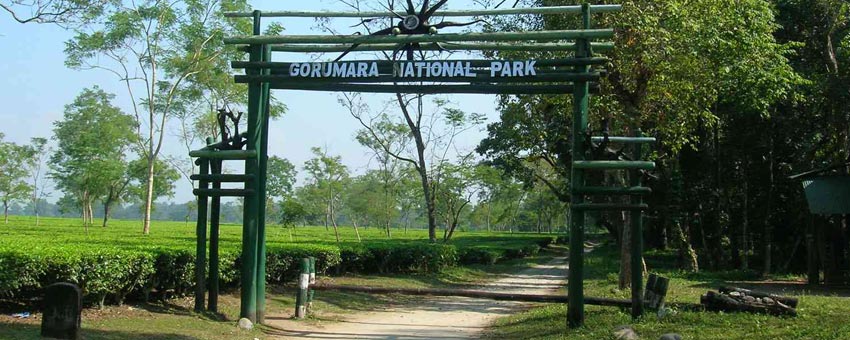Role of Vegetation Types in the Popularity of Gorumara
Updated:- 11-May-23 Gorumara National Park is a famous wildlife sanctuary and tourist destination in the Indian state of West Bengal. Gorumara is a national park with one of the best habitats all over India and covers an area of approximately 79.99 square kilometres and is home to various types of vegetation.
People often talk about the flora and fauna of the national park but few talk or even notice the most beautiful and important part of the forest. The thing we are going to discuss today is the Vegetation of Gorumara National Park. Vegetation of the park is the speciality of the park. And you can enjoy the beauty of mixed vegetation here with the help of a safari ride but don’t forget to do a pre-Gorumara Online Safari Booking as it will help you in saving time and effort at the time of your trip.

The vegetation types found in Gorumara National Park are:
1. Sal Forest: The Sal forest is the dominant vegetation type in the park and covers most of its area. The forest is named after the Sal tree (Shorea robusta), which is the most common tree species found here. You can witness other tree species in the Sal forest including Terminalia chebula, Terminalia bellirica, and Lagerstroemia parviflora.
2. Mixed Deciduous Forest: The mixed deciduous forest is another vegetation type that you can witness in the park, and it consists of a mixture of Sal trees and other deciduous tree species such as Teak (Tectona grandis), Indian Elm (Holoptelea integrifolia), and Indian Coral Tree (Erythrina variegata).
3. Tropical Semi-Evergreen Forest: You can witness this vegetation type in the higher elevations of the park and consists of a mix of evergreen and deciduous tree species such as Indian Laurel (Litsea glutinosa), Indian Mahogany (Chukrasia tabularis), and Simal (Bombax ceiba).
4. Grasslands: The grasslands in the park are mainly found in the riverine areas and consist of various grass species such as Themeda villosa, Arundinella nepalensis, and Imperata cylindrica.
5. Bamboo Groves: The park has several areas of bamboo groves, which are home to various species of bamboo such as Dendrocalamus hamiltonii, Bambusa balcooa, and Bambusa tulda.
Importance of Vegetation in Gorumara National Park:
● Vegetation improves the appearance of the forest: Vegetation plays a crucial role in the popularity of Gorumara because it is the primary habitat for the park's diverse wildlife and also provides aesthetic appeal for visitors.
● Vegetation is a main source of food for the forest’s wildlife: The park is known for its tall grasses, dense forests, and diverse flora, which includes over 300 species of trees, shrubs, and herbs. This vegetation provides food and shelter for the park's wildlife, including the Indian rhinoceros, Asian elephant, Indian bison, and various species of deer, birds, and reptiles.
● It makes this place worth visiting: The lush vegetation also creates a beautiful and serene atmosphere for visitors, making Gorumara an ideal destination for nature lovers and photographers. The park's grasslands and forests are particularly picturesque during the monsoon season when the plants are at their greenest and most vibrant.
● It helps in the preservation of natural elements of the park for future generations: In addition, the park's ecotourism initiatives promote the conservation of the park's vegetation and wildlife while providing sustainable livelihood opportunities for local communities. This helps ensure that Gorumara remains a popular destination for visitors while preserving its natural beauty for future generations.
Conclusion
Overall, the vegetation in Gorumara National Park plays a critical role in the park's popularity by providing habitat and sustenance for wildlife, creating a beautiful and peaceful environment for visitors, and supporting sustainable tourism and conservation efforts. In addition, these different types of vegetation provide habitat and food sources for the park's diverse animal species, including elephants, Indian rhinoceros, bison, and various species of deer and primates.